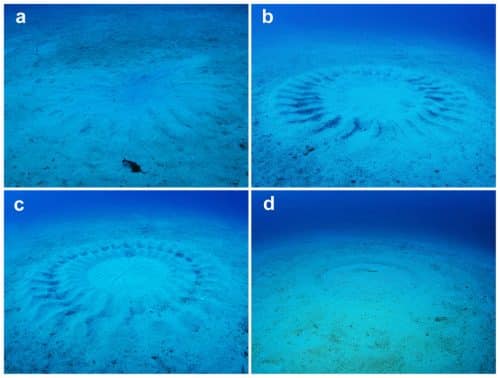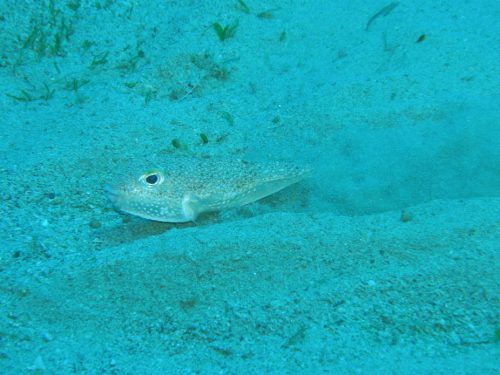Why does a small fish living near the coast of Japan create round structures in the sea sand?

By: Adi Weiss
In 1995, a group of divers locates, near the coast of the Japanese island of Amami-Oshima, something unusual underwater; A complex, perfect circle shape with multiple channels, which is about 2 meters in diameter. Despite attempts to find the mysterious creator, no explanation was found for "circles in the sand" for over a decade. Only in 2011 was the humble builder discovered. This is a small fish, a close relative of our Israeli puffer fish (or "Abu Nafha"), the whole size of which is 12 cm.
The fish, which belongs to the genus Torquigenerr of the pufferfish family, lives near the coast of Japan, in warm tropical waters. The pufferfish family is famous for the ability of its representatives to swell in times of danger and for the dangerous nerve poison Tetrodotoxinn, which is found in the skin and internal organs of some of them.
The information about the fish's ability to draw complex geometric shapes is, as mentioned, new. Only the males bother on such a masterpiece - a hassle that will last 24 hours of work every day, for more than a week, because of the water currents. If they are lucky, the work will also pay off; Females come to examine the creation during courtship season. If they like what they see, they will choose to lay their eggs in the center of the circle, and the male will get to fertilize them.

Fish are already sold that build ridges for the eggs that the females will lay, but the structures of this fish have 3 new and unique features: First, they include ridges and channels external to the spawning area, which are arranged in a circular fashion. Second, the male adds shells as decoration to the circle. And thirdly - the male collects selected sediment grains, which give the final product a unique color. These, amazingly, he collects using the configuration itself. The channels direct the grains to the center. The water is channeled out, while the grains remain in the center. Studies have revealed that the speed of the water slows down by about 25% when it is in the center, where the eggs are laid.
The engineering of complex structures by small animals, under conditions of strong currents and pressure, is a great challenge, the creations can be destroyed in a short time, and then the male is forced to build again and again, in another place. The complexity of the structure, as well as its ability to transport water and materials through it efficiently, can serve as a good inspiration for engineers, architects and designers. The geometry and reason for the impressive size of the circles is still being investigated, as is the reason for the careful collection of the colored sediment particles.
